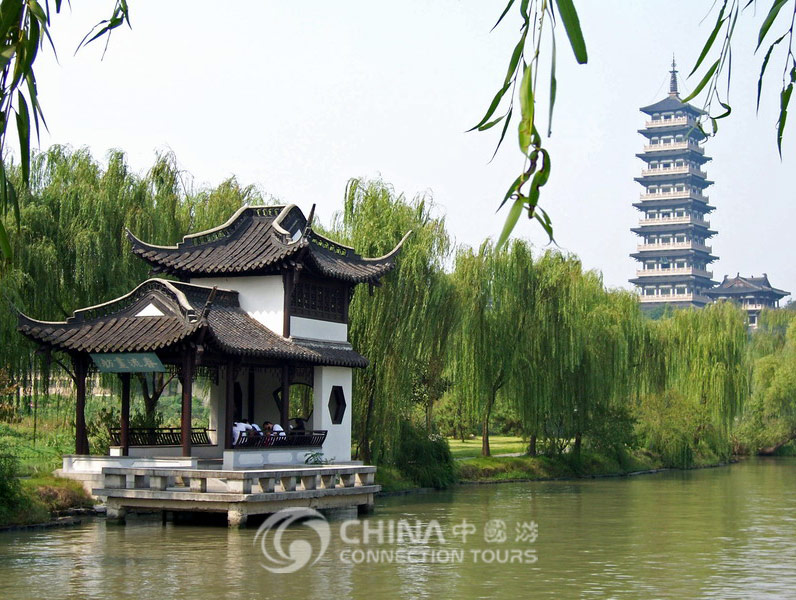
Yangzhou, where Marco Polo once served as a municipal official, has a history of 2,500 years, tracing back to the Spring and Autumn Period when it was called Guangling. The city is famous for its once brilliant historic role in Chinese history. Situated in the south of Jiangsu province on the north bank of the lower reaches of the Yangtze River and the south end of Jianghuai Plain, Yangzhou attracts many tourists. Today, Yangzhou is recognized as a prospering city of history and culture in southeast China.
 Yangzhou has a population of around 4.5 million and a total area of 6,634 square km. It is connected to the rest of the province by water, land and air communications, and is about a one-hour drive from Nanjing. The city has a subtropical monsoon climate with humid, changeable wind and an average temperature of 15 degrees Celsius. The hottest month is July when temperatures hover around 27 degrees Celsius. January is the coldest with temperatures nearing 1 degree Celsius above freezing. The rainy season is from the middle of June to July, and the annual average rainfall is 1030 mm.
Yangzhou has a population of around 4.5 million and a total area of 6,634 square km. It is connected to the rest of the province by water, land and air communications, and is about a one-hour drive from Nanjing. The city has a subtropical monsoon climate with humid, changeable wind and an average temperature of 15 degrees Celsius. The hottest month is July when temperatures hover around 27 degrees Celsius. January is the coldest with temperatures nearing 1 degree Celsius above freezing. The rainy season is from the middle of June to July, and the annual average rainfall is 1030 mm.
Yangzhou has one of the four best known cuisines in China. It emerged in the Sui dynasty (581 AD - 618 AD) and has a history spanning 1,200 years. Until the 19th century, Yangzhou acted as a major national trade center and a transport hub as it was situated at the junction of the Yangtze, the Grand Canal and the Huaihe River. This historical period left Yangzhou a large number of treasures including valuable architecture, culture and historical personas. The city is the birthplace of the former Chinese president, Jiang Zemin, who was born in Yangzhou and had his early schooling here.

